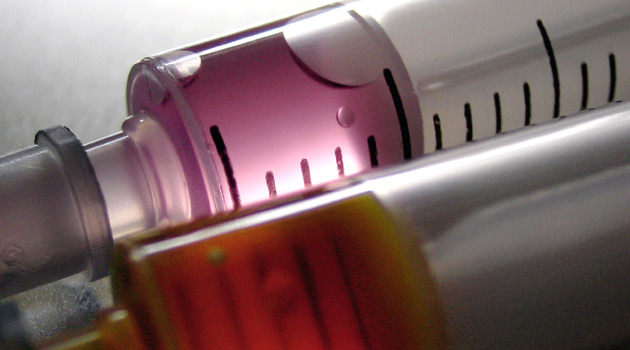Health & Fitness
Is Testosterone Replacement Therapy Right for You?

Odds are, you’ve heard about all the amazing benefits of testosterone replacement therapy. From weight loss and enhanced vitality, to better physical strength and endurance, the numerous advantages of testosterone supplementation are widely touted. But what, exactly, is testosterone therapy? How is it administered, and what are the risks? Keep reading for more on testosterone therapy, which includes information on procedure, risks, side effects and more.
What is Testosterone Therapy?
First of all, testosterone is the male hormone in charge of functions like sex drive, sperm count, muscle mass, fat distribution, and bone density. As we age, our bodies produce less testosterone, which often results in effects like reduced sex drive, fertility problems, weight gain, depression, hair loss, physical weakness and more. And while these effects are a normal part of aging, many men find them frustrating and uncomfortable. So, to restore hormone levels and reduce the side effects of low testosterone, or low T, many men look into the option of replacement therapy.
When it comes to administering testosterone therapy, doctors typically use one or more of the following methods:
- Testosterone patches. These patches are applied daily, usually on the thighs, the buttocks, the lower back or the abdomen.
- Testosterone gels. Also applied daily, these gels are typically applied to the abdomen, shoulders and/or lower back.
- Intramuscular injections. Testosterone injections are often used during replacement therapy, and are generally administered every few weeks.
What are the Risks?
Like most medical procedures, there are various risks associated with hormone replacement therapies. For example, testosterone therapy side effects include the following:
- An increased risk of heart attack, deep vein thrombosis and pulmonary embolism.
- Breast enlargement.
- Testicle shrinkage and/or limited sperm production.
- Risk of prostate dysfunction, including the development on noncancerous growths in the prostate region, as well as a heightened risk of prostate cancer.
- The development of sleep apnea, which can result in a host of other problems relating to respiratory and cardiovascular health.
- Changes in the skin, specifically the development of acne.
Is Testosterone Therapy Right for You?
If tests reveal that you have low testosterone, but you aren’t experiencing any symptoms, no treatment is recommended. If you are experiencing the effects of low T, know that you do have other options. For example, in cases of low testosterone levels, the following lifestyle changes may be beneficial:
- Avoiding plant-based estrogen. Foods like yams, chickpeas and soy contain phytoestrogens. These foods may increase estrogen levels in the body, which can exacerbate the symptoms of low-T.
- Exercise. If you’ve experienced symptoms like weight gain and physical weakness, regular workouts can help. To lose weight and build muscle mass, be sure to include both cardiovascular exercise and strength-training.
- Check your medications. Some prescription drugs can lower the body’s production of testosterone. Talk to your doctor to see if any of your medications may be affecting your testosterone levels.
- Get enough sleep. Poor sleep habits often contribute to hormonal dysfunction. To help restore hormonal balance, aim for at least 8 hours per night.
For some men, the side effects of low testosterone are incredibly frustrating. If you decide that replacement therapy is right for you, be sure to ask your doctor about the possible risks associated with these treatments, as well as any natural remedies that could help. And remember, aging is a natural process that happens to all of us. And while getting older can be challenging, it also presents us with a new, and often better, perspective on life.

















Recent Comments